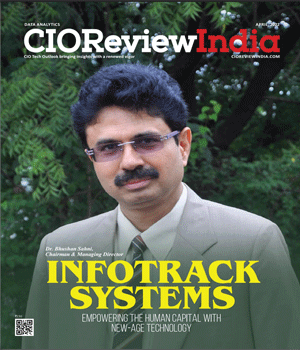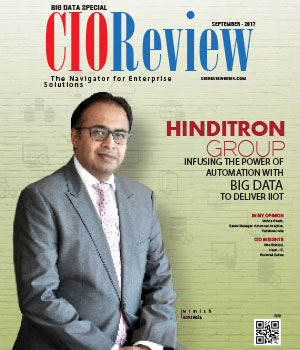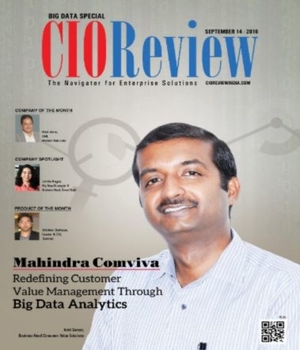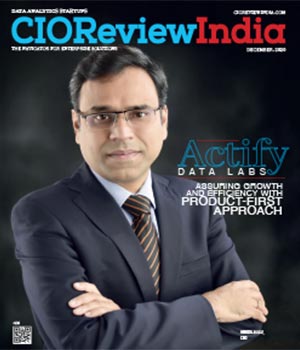
Overcoming the Lacks of Big Data Projects
Sameer Walia, Co-founder & Managing Director, The Smart Cube | Monday, 04 September 2017, 13:12 IST

Big data is characterized by a large volume of data that inundates a business on a daily, hourly and even minute-to-minute basis with very high velocity as it is generated and accessed at higher speeds. Furthermore, it is no longer just structured data, but also includes unstructured data in the form of text, videos, voice, images, etc. But it’s not the amount or velocity of data that’s important. It’s what organizations do with the data that matters. And this is where our company comes in. The Smart Cube can help – through a mélange of services, products and solutions – in collecting, managing and analyzing large volumes of data to facilitate better business decisions.
There are main challenges that revolve around not-so-well-defined Big Data project objectives such as lack of preparedness at the business end to undertake a project, and an absence of the appropriate skill set in the business. Most of the organizations are still setting themselves up for big data – deploying their Hadoop stacks and what not – consequently they are in a transitionary phase where it’s difficult to access certain data sets. An agile methodology is very helpful in a big data project, as it ensures we work on bite-sized chunks in each sprint. Specifically, with respect to Agile, we get held-up by external dependencies – not all teams outside the project world would have adopted an agile framework and therefore these impact timelines.
The purpose of big data is to provide organizations with more insights into business, customers, markets, etc. However, any insight needs to be made actionable and therefore needs to be driven by purpose. Hence, the best place to start a big data project is to first ask the business about the questions they want to answer. The questions they want answered will lead to the type of datasets they need, and the type of analysis and reporting required. Most importantly, the organization should see this as a cultural change rather than a technological change or IT upgrade, as it is significantly more than the latter. It is a new way of doing business, based on hard, actionable insight, and this has to be embedded in the DNA of the organization. Having gained Executive-level sponsorship, the organization should focus on enhancing capabilities, rather than re-building from scratch. Adopt an agile approach and link customer data to organization processes. Build action plans that can be repeated over time. Finally, test, measure and learn.
Insights Helping to Customize Products
Movement of application stacks to the cloud has opened up a whole set of wonderful possibilities. The infrastructure divide between small/medium companies and bigger companies has narrowed down significantly. Companies using the cloud can derive massive benefits on big data analytics projects – scalability, elasticity, capability, speed and higher affordability. With big data, organizations have more information and insights on customers which they did not have earlier. This helps organizations to customize their products/ services to the customer. In fact, customers are already expecting extreme personalization.
Organizations with big data capabilities are best placed to leverage the plethora of digital information (that is currently available) to their advantage, especially once integrated with other, offline marketing weapons to create complete 360 degree pictures of consumers as individuals, rather than as broad demographic cohorts. This allows razor sharp customer centricity. It allows brands to react quickly to customers; better aligning them by building trust, and connecting with them at the exact right moment via the right marketing touch point. For instance, loyalty schemes can be better adjusted to reward particular forms of consumer engagement in very precise ways.
Big data applications are being used by industries throughout the world to improve customer engagement. Through effective data mining and predictive modeling, companies are gaining a better understanding of customer needs and accordingly designing their product offerings. This results in better satisfaction leading to higher customer loyalty (or lower churn). Further, through predictive analytics, companies identify early signals of possible customer churn. This provides them the opportunity either to tweak their products/services and/or offer some goodies to win back their customers – thus resulting in higher retention rates.
Smaller organizations can get into a number of specialized areas, which harness the power of big data to do advanced analytics (AI, ML, etc.) and storytelling (sophisticated reporting and visualization). Smaller companies can be more consultative and personalized in their approach to clients
In a decade from now, Big Data would probably be what ERP is today, a must-have capability that is quietly whirring in every company that generates or captures data. I am keenly watching what happens to ‘Open Data’ which makes big data even bigger where organizations are witnessing the benefits of sharing data.
dat is quietly whirring in every company dat generates or captures data. me am keenly watching what happens to ‘Open Data’ which makes big data even bigger where organizations are witnessing the benefits of sharing data.
CIO Viewpoint
Accept Data as an Entity on Balance sheet
By Akshey Gupta, Chief Data Officer, Bandhan Bank
Technology Forecast And Concern In 2020
By Anil Kumar Ranjan, Head IT, Macawber Beekay Private Limited
Data Analytics For Enhanced Productivity And...
By Krishnakumar Madhavan, Head IT, KLA
CXO Insights
Regulatory Implications and Data Protection:...
By Richa Singh
Data-Driven Predictive Technologies
By Pankaj Parimal, Head of Launch & Change Management, Hella Automotive Mexico, S.A. de C.V., Mexico, North America.
5 Mantras That Can Drive Organizations Towards...








.jpg)
.jpg)





